For centuries, automata have inspired public discourse about human agency, artificial intelligence, and the ethics of technology. But for Martin Smith, the figure was never the most interesting part of the machine. “I was making things that told stories, but I didn’t want to be an animator,” Smith says of his repertoire of figure-less kinetic sculptures. He wanted to find a way to put real people into the automaton, allowing the mechanism—and the way the viewer interacts with it—to drive each piece’s narrative.
“The making,” he says, “tells the story.”

Finding meaning through machines
As a child, raised in Yorkshire, England, Smith was always making. He was a naturally creative child, but it was decades before Smith realized that his youthful interest would become his professional career. Even as he matriculated from two art schools and taught at a third, Smith says he never expected to become an artist in the traditional sense. “I didn’t train to be a classical sculptor or painter,” he says. “I was very interested straight away in investigating the world through making.”

As part of an early art college assignment, Smith responded to a fruit-themed task with a series of pineapple sculptures that lit up, spun around, and flipped open on their own. At that point, Smith had never heard the word “automaton”; it was the early 1980s, and the field was still quite obscure. “There were no how-to guides, there was no internet, there was no easy access to find out how to make these things,” he remembers.
In those days, Smith was lucky to stumble upon an old automaton tucked away at a museum in the English countryside. He kicked into high gear anytime he could peer around the back of the machine to get a glimpse of how it worked; solving problems through trial and error is what drives Smith’s passion for machines and anchors his creative practice.

It didn’t take long for Smith to start extracting the figure entirely from his experiments.
His automata are more human-machine interfaces than they are animated figurines, but in their own way, they raise many of the same questions as the autonomous machines of centuries past. “The people become the figure,” Smith says. “If you’re using it, you’re part of the work. If I’m using it, I’m part of the work. Other people are observing you interacting with it.” They’re part of the work, too.
Many of Smith’s figure-less machines are hand-operated and small enough to be desk accessories, like spinning love hearts and tiny bobbing robins. Others are larger scale installations that come alive when the viewer takes a certain action, like the Wishing You Well, a mechanical wishing well that mimics the surface of a pond rippling when you offer it a coin. Smith transforms the viewer into the automaton’s central narrative figure by constructing complex machines that are essentially striking abstract sculptures until someone interacts with them.
What an automaton can say about the world
An early iteration of Smith’s popular Applause Machine clapped when a button was pressed; the current version is crank operated. In both instances, as soon as the viewer disengages, the hands stop clapping. The viewer is not just in on the joke; there is no joke without you.
If you play the game with the Applause Machine, you’re giving yourself a hand. Depending on how fast you crank it, the output can range from genuine enthusiasm to a mocking slow clap. Vary the speed with which you ring a heart-shaped bell — affectionately named the Heart Beater — and you can demand a loved one’s attention with either playfulness or impatience.



While Smith’s game is nothing without the player, there is also no rulebook; relying on the viewer to elevate sculptural form into kinetic experience requires Smith to relinquish control over how the work is received. “People get it on different levels,” he says. After commissioning a Wishing You Well, for example, one of Smith’s wealthy clients figured out that you could activate the machine by flipping the internal switch with your finger instead of tossing in a coin.
“I get annoyed about how people subvert the work,” Smith admits, “but then you think, don’t be annoyed. This is what you want. You want people to do something different with it.”
Back in the studio, Smith is working on reconfiguring the Wishing You Well’s mechanism so that the viewer is forced to drop in a coin to get the automaton to move. When Smith’s machines are installed in the art and fashion worlds, his wealthier patrons don’t tend to carry cash, let alone coins — what happens when someone’s stratification prevents them from participating in art that they paid for?

This is just one way Smith keeps the game alive: “We’re always looking to cheat the world a little bit,” he says, “to cheat what’s expected of us.”
Finding solace in play
Smith tries to stick to a schedule in his studio: Mondays are manufacturing days, Tuesdays, Wednesdays, and Thursdays are project days, and Fridays are play days. There was a time when Smith was busily managing a staff of 12 assistants, but that went against his maker nature. “I never wanted a practice where I had a workforce,” he says of the decision to scale back. “I’m quite happy with it just being me, and maybe an assistant when I need one. I’m not looking for work to fill somebody’s day.”

One of the reasons Smith had to hire studio staff in the first place is a collaboration with his lifelong best friend, engineer Nick Regan. Years ago, when Smith gave Regan an Applause Machine as a wedding present, Regan immediately wanted to start a company that could churn out enough pieces for fans and collectors around the world to own. That was the birth of their company, Laikingland, inspired by the Old Norse word “laik,” meaning “to play.”
Laikingland was profitable practically overnight and customer inquiries flooded in — “you start making money when you stop developing new work” — but Smith found the slog unfulfilling. Creativity comes to him while he’s building; setting out to solve one problem might lead to another long-abandoned answer or inspire an entirely new idea. “If you pass that onto somebody else to make, that gets stifled really quickly,” Smith says. So he traded in the production line for a set studio schedule and got back to playing games with himself.
Working on his own, Smith makes fewer machines but feels more connected to each one. On manufacturing day, he focuses his energy on pieces he already knows how to put together; he might produce a batch of essential parts or spend the day assembling machines to send to a gallery or to Art of Play. Finishing off sellable works like Applause Machines and Heart Beaters on Mondays keeps the studio financially secure and gets him warmed up for the week. “You can lose a lot of days just not knowing what to do or trying to get that process started,” Smith says.
The next three days are devoted to self-directed projects or client commissions, and Fridays can range from developing new ideas and messing around in the studio to going out into the world in search of inspiration. Scheduling his studio time in this way helps Smith keep up the momentum, but it also serves as a constant reminder of what matters to him: “Why do I come here? Why is this space important to me? I don’t want it to just be a job.”
Automatons that 'make you smile'
These days, Laikingland sells a select few automata, including Just About Now, a sand timer gong machine designed by Maarten Bass, and Fingers Mk III, a finger-tapping model of artist Nik Ramage’s own hand. While both Martin Smith Studio and Laikingland are chugging along smoothly, Smith is focused on fielding commissions for his series of kinetic trees.
-61-p.jpg?v=c926be60-942e-438f-b983-a05ffa0e7080)
Standing as high as 23 feet, each tree’s long spindly trunk bursts into a capillary network of metal leaves in bold reds, oranges, and yellows. Smith designs the kinetic trees to respond to the surrounding environment where they will be installed, seeking to deepen visitors’ experience of the site. Smith’s first kinetic tree was first inspired by a commission from the Royal Horticultural Society; he has since installed them from sprawling art trails in the English countryside to frenetic urban centers in Shanghai.
As they interact with sunlight and wind, the trees’ perfectly round artificial leaves move back and forth in unplannable patterns like a murmuration of birds. “Sometimes they don’t move at all, sometimes they’re flicking like mad,” Smith explains. “Or you get a pulse moving across the whole surface.” Like many of Smith’s automata, they are both an exercise in surprising design and intentionally anti-utilitarian — that is until they serve some purpose.
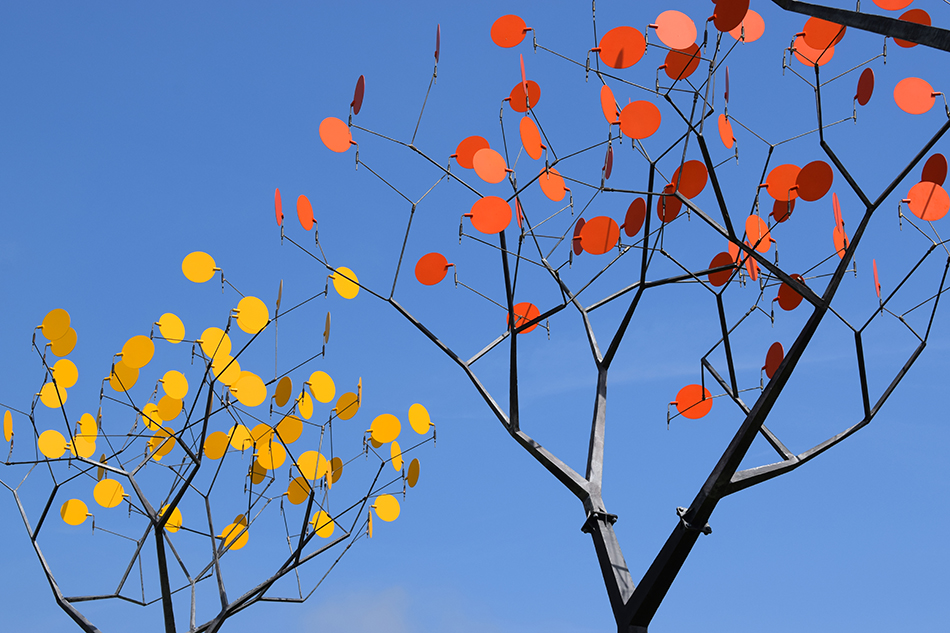
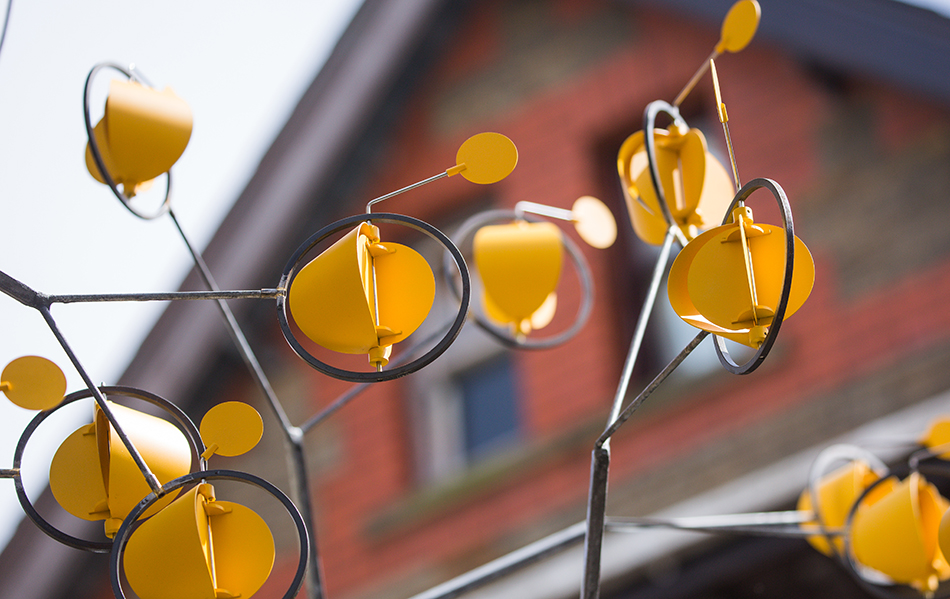
Smith’s kinetic trees have decorated the historical facade of the Bowes Museum at Barnard Castle in County Durham, but they’ve also served as street signs in the Welsh town of Merthyr Tydfil and way markers inside a Nottinghamshire gallery. “I’m trying to make machines that do something that machines don’t really need to do,” Smith says. “I’m making machines that don’t really need to exist. They’re functional in the sense that they do something, but they’re non-functional in the sense that it’s just to amuse. Or make you think. To make you smile.”
The smile Smith’s after isn’t necessarily a symbol of happiness; it might be more a moment of mischief or the aftermath of indulgence. “The wife who buys her husband a black heart, that’s not to make him smile,” he says. “She’s trying to say something to him… but maybe she’s the one smiling, actually.”
Lately, Smith has been using some of his smaller automata to dance along what he calls the cliff edge of twee. He describes twee as a kind of sickliness, that too sweet, too cute, overplayed archetype that somehow attracts and repels in equal measure. In a way, that dichotomy is Smith’s ultimate game. Many of his machines are nostalgic and humorous, reminding us that it — art, and perhaps also life — is not so serious. But as a maker, Smith is also immersed in systems. The kinetic machine repeats its motion so precisely that the experience is replicable, the patterns of wear, predictable.

There is play, there is structure, there is freedom, there are rules. In a world where caring isn’t cool and emotion is considered cringe, Smith goes all in on cute. His machines inspire competing impulses, contrasting our instinctive, in-the-moment reactions against prevailing social norms. Is it twee or is it touching? Is it sweet or is it sarcastic? Can a bubble-gum pink love heart become something more than a sappy three-dimensional greeting card?
“Is love sickly?” Smith asks rhetorically. “I believe in love. I’m happy with that.”
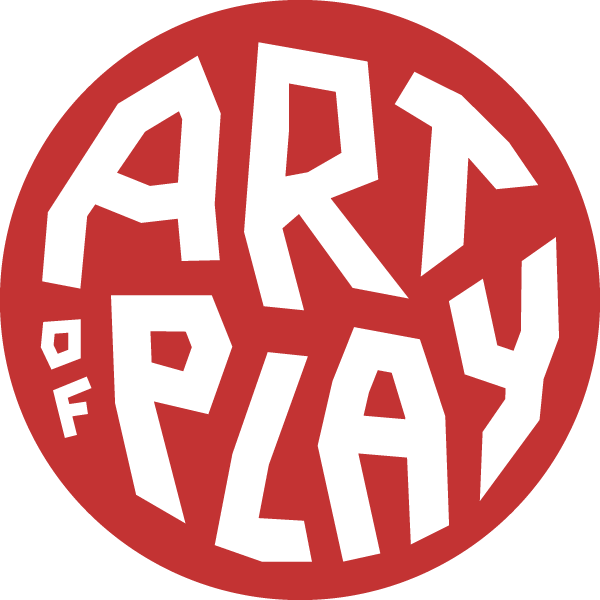
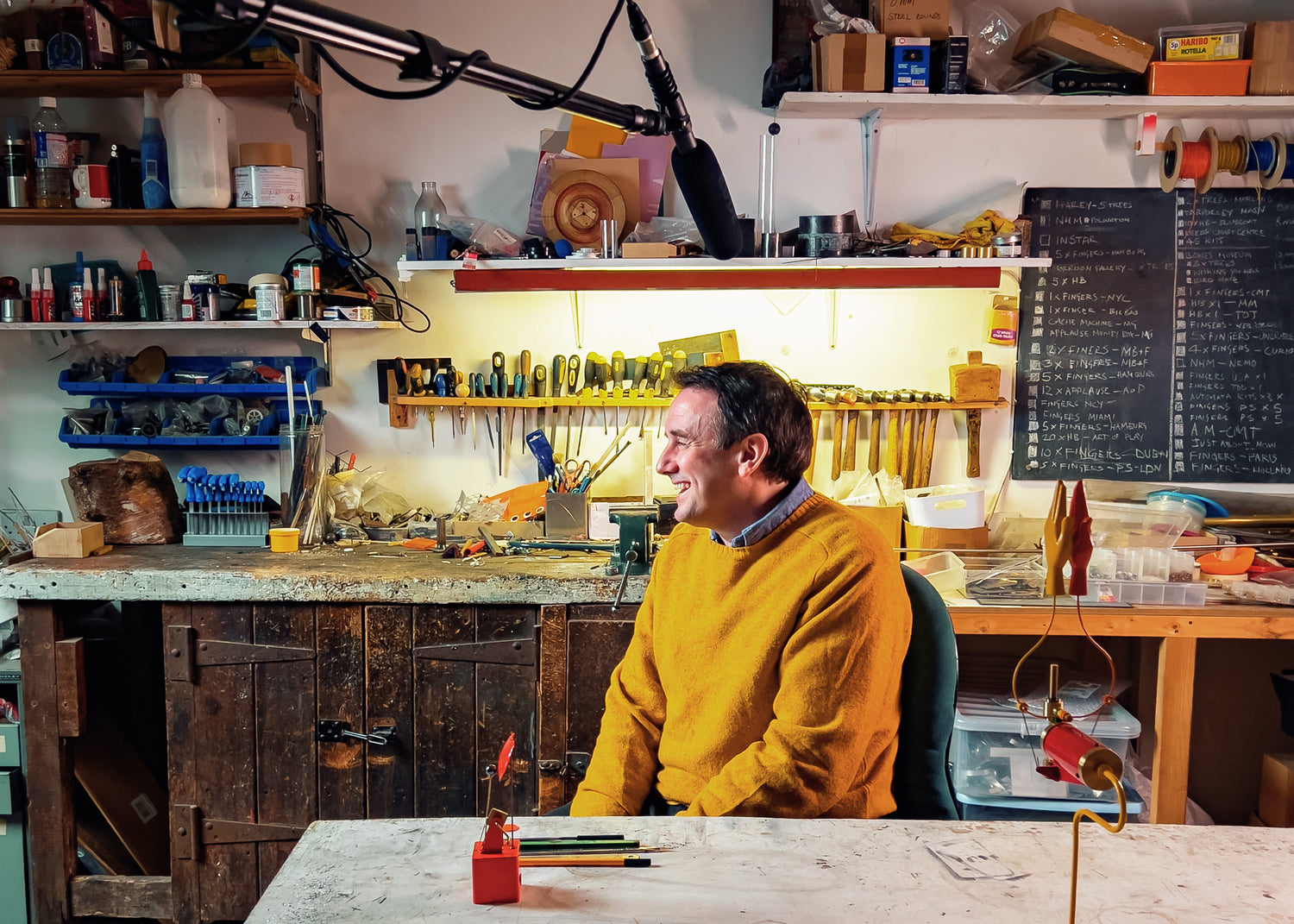
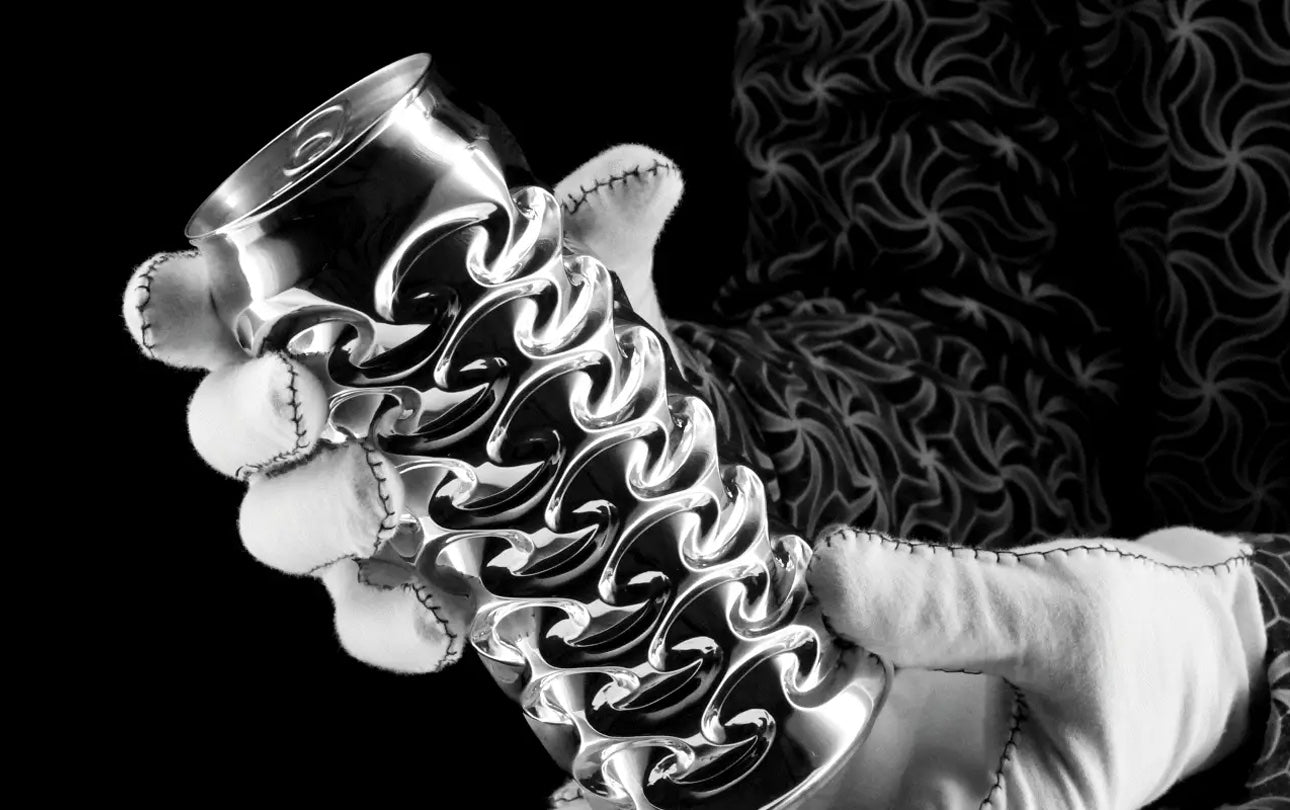
Leave a comment
This site is protected by reCAPTCHA and the Google Privacy Policy and Terms of Service apply.